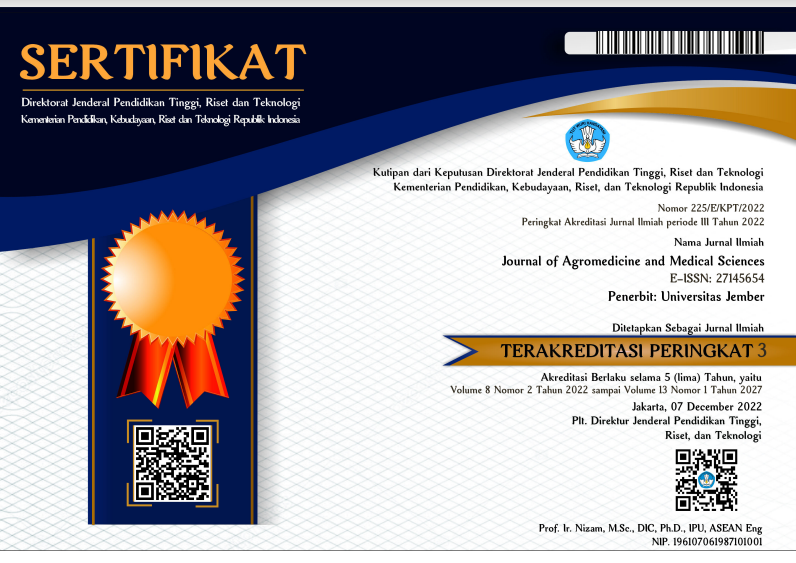Correlation between Zinc Intake and Height of Children Aged 6-59 Months in Jelbuk and Sumberjambe Districts
DOI:
https://doi.org/10.19184/ams.v10i1.42448Abstract
Stunting is a nutritional problem that people around the world are facing. The World Health Organization (WHO) has determined Indonesia as one of the five stunting prevalence subregions in the Southeast Asia region. Zinc includes micro-nutrients that are important for the growth and development of children. The prevalence of zinc deficiency in children in Indonesia in 2006 was 36.1%. This study aims to determine the relationship between zinc intake and the length/height of children aged 6-59 months in the Districts of Jelbuk and Sumberjambe. This research is an analytic observational study with a cross-sectional design. The sample used was 119, derived from secondary data from previous studies. Zinc intake in children was obtained through 24-hour food recall data and then analyzed using nutrisurvey software, while body length/height is the maximum distance from the vertex to the soles of the feet. The study results were that 57.2% of the samples had insufficient zinc intake, with an average daily intake of 4.37 ± 2.35 mg, and as many as 60.5% had TB below normal. The data analysis showed a significant relationship between zinc intake and the length/height of children aged 6-59 months (p=0.001), with a reasonably strong relationship (r=0.295). This study concludes that there is a relationship between zinc intake and the length/height of children aged 6-59 months in the Jelbuk and Sumberjambe Districts.
Keywords: Zinc, Stunted, Stunting























